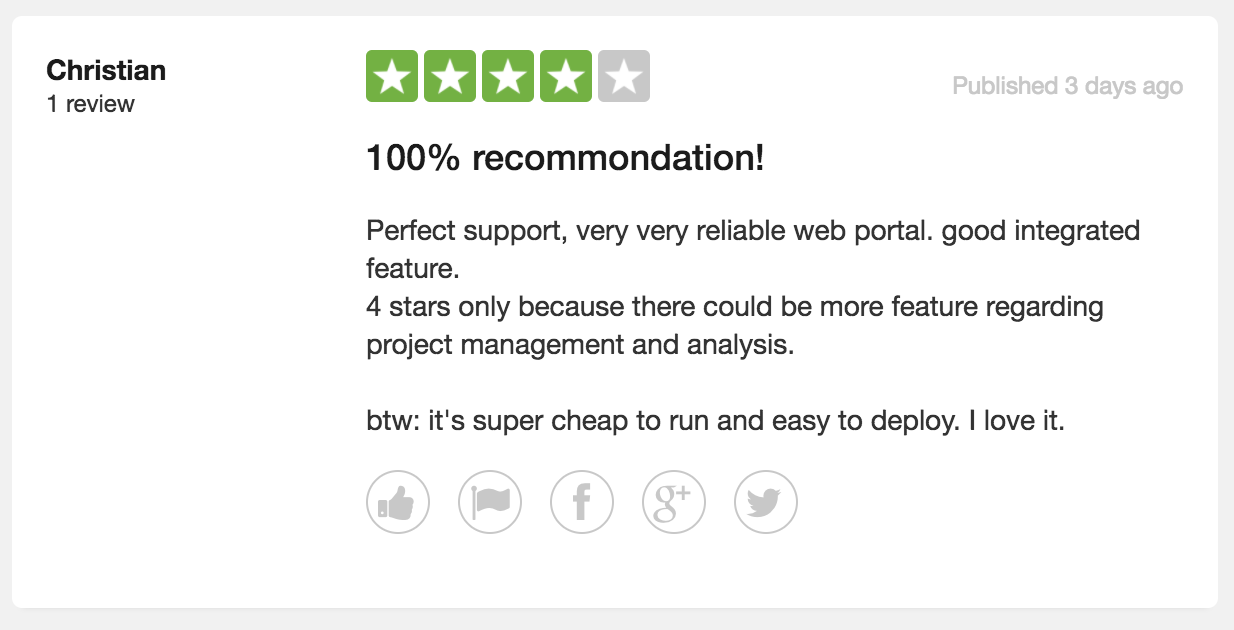You can grow your SaaS business in three ways:
1. get more customers;
2. get customers to stay longer; or
3. get customers to pay more.
I believe that the last one, pricing, is an underrated lever of growth. We tend to focus on acquisition and, to a lesser extent, retention.
But get pricing right, and you’ll grow revenue and even increase customer satisfaction.
Pricing is a function of your marketing, meaning it reflects your product, your value proposition and your positioning. Your pricing sets the stage for the rest of your strategy.
I’ve worked at several SaaS companies over the years, and I’ve tested both terrible approaches to pricing and other approaches that worked really well.
Here, we’ll take a journey through the process of optimizing the price of your SaaS product.
Finding Your Price
Software is not about figuring out the cost of manufacturing the software, slapping on your margin and coming out with your price.
The whole point of getting into software is that you may start with a very low or negative margins, but over time your gross margin can increase to fantastical levels as you get more and more customers.
So, you focus instead on the value that the software provides, and you set the price accordingly.
The result of this is that your price comes from your customers, not from a spreadsheet.
You can talk to them, you can read their emails and you can go through customer support requests.
Their language, the words they use and how they describe your service will give you an idea of how they see you in terms of pricing.
For example a customer left this review of Planio on Trustpilot:

As you can see, this person certainly sees Planio as more than reasonable, describing it as “super cheap”. That’s an indicator that the pricing of Planio is low for this particular customer.
And what if you don’t have many customers yet? Well, Steli at Close.io tells a story on his website about how he found the “right” price for a new product while talking to new prospects.
When the person would ask about the price, he’d give them a price that was 5% higher than he’d quoted to the previous person.
Once he got to the stage where 20% of the customers were balking at the price, he felt he had reached an optimum level of pricing.
The Optimized Pricing Action Plan
You’ll read that pricing is a process. That pricing is something that you won’t get right the first time. That you just have to test.
Well, that’s true and it’s also pretty vague. Especially so if you’re the one responsible for doing something about your pricing.
It’s tough to tell the entire company that the hundreds of angry Tweets, emails and phone calls about your new pricing is just the “result of a test”.
So, where do you start and what, exactly, should you do?
Step 1: Gather Existing Data on Pricing
First off, if you have customers, I’d look at what they are saying in support tickets, emails or on review sites. That’s your first source of data on how they’re talking about your pricing.
They’ll give hints about where they put on you in terms of price and value.
If you don’t have any customers, I’d start looking at the same data for your nearest competitors.
This is the most basic step, however, and I think most people do this step.
Step 2: Set Up Calls with at least 10 Customers
It’s always amazing how little people talk to users and customers, despite that being a core part of the job of product managers, product designers and product marketers.
In my experience, people often get into the software business in the hope that they’ll avoid talking to customers.
However, the best software-as-a-service businesses talk relentless to customers in the stage from 0 – 1 million in ARR. The reason is that you need a rock solid understanding of your customers if you want to scale to 10, 20 or even 100 million.
It starts with talking to them on the phone. Talking to 10 people can lead to talking to even more. I went into detail on how you can go about this on a guest post over on GrowandConvert.com.
Step 3: Ask Them Questions about Pricing and Value
Usually, product designers and UX researchers use customer interviews to figure out how customers think and behave.
What never occurred to me until recently was that you can also use these calls to figure out what they think about your pricing.
Obviously, you can’t ask them straight up: what’s the most you’d actually pay for this software?
But you can ask questions that will reveal how they value your product.
On a webinar by PriceIntelligently.com, they gave me these three questions for pricing:
- At what price point would our product become expensive, but you’d still consider buying it?
- At what price point would our product become good value?
- At what price point would our product become so cheap that you’d start to question the quality of it?
Step 4: Change Your Existing Pricing
At this stage, you’ve gathered some data on your customers. You’ve learned some nuances on how they think about your pricing. And you’ve decided to change your pricing.
You can change your pricing in a variety of ways:
- Simply increase the price of your existing plans;
- change the amount of the core value metric each plan gets – i.e. the cheapest plan gets less seats;
- change your core value metric for your product – i.e. change from number of seats to number of projects for a project management app.
So, there’s more than one way of changing your pricing. It’s not just about increasing the dollar amount.
For example, at Planio, we changed the amount of users and the projects you get in each plan, rather than the amount charged.
Step 5: The Power of Grandfathering Your Existing Customers.
Grandfathering means that you don’t impose your new pricing on your existing customers. They get to stay on the old plan, often indefinitely, until they want to upgrade.
This drastically reduces the risks of trying out a new pricing model.
You’ll avoid a backlash from your customer base. In fact, in my experience, you’ll get emails from existing customers thanking you for letting them keep their old plans.
You’ll also reduce the risk if your new pricing model turns out to be disastrous. Imagine if you introduce a new core value metric, and you find out that your customers are behaving very different to what you expected – perhaps in a way that reduces, not increases, revenue.
You’ll be able to ‘reverse’ your pricing change with only a few months of customers on the failed pricing model, rather than your entire customer base.
Pricing as the Underutilized Tool
Much of the SaaS case studies online focus on acquisition of new customers.
I think this makes sense, because the wider audience is interested in starting a SaaS company. Not very many people actually have a SaaS product that has enough traction to start optimizing the pricing.
At the same time, if you’re in the lucky position of having a successful SaaS product, you’ll find that pricing will be a place where you get outsized returns.
In a webinar for Kissmetrics, Lars Lofgren mentions a case study involving a company called Bidsketch where they doubled average revenue per account via a new pricing model.
Amy Hoy tells about how she’s increased the price of her time tracking app four or five times with revenue going up every time.
So, once you’ve gotten to a certain point in your SaaS business, say 500 customers, I think it makes sense to start putting time into optimizing your pricing.
